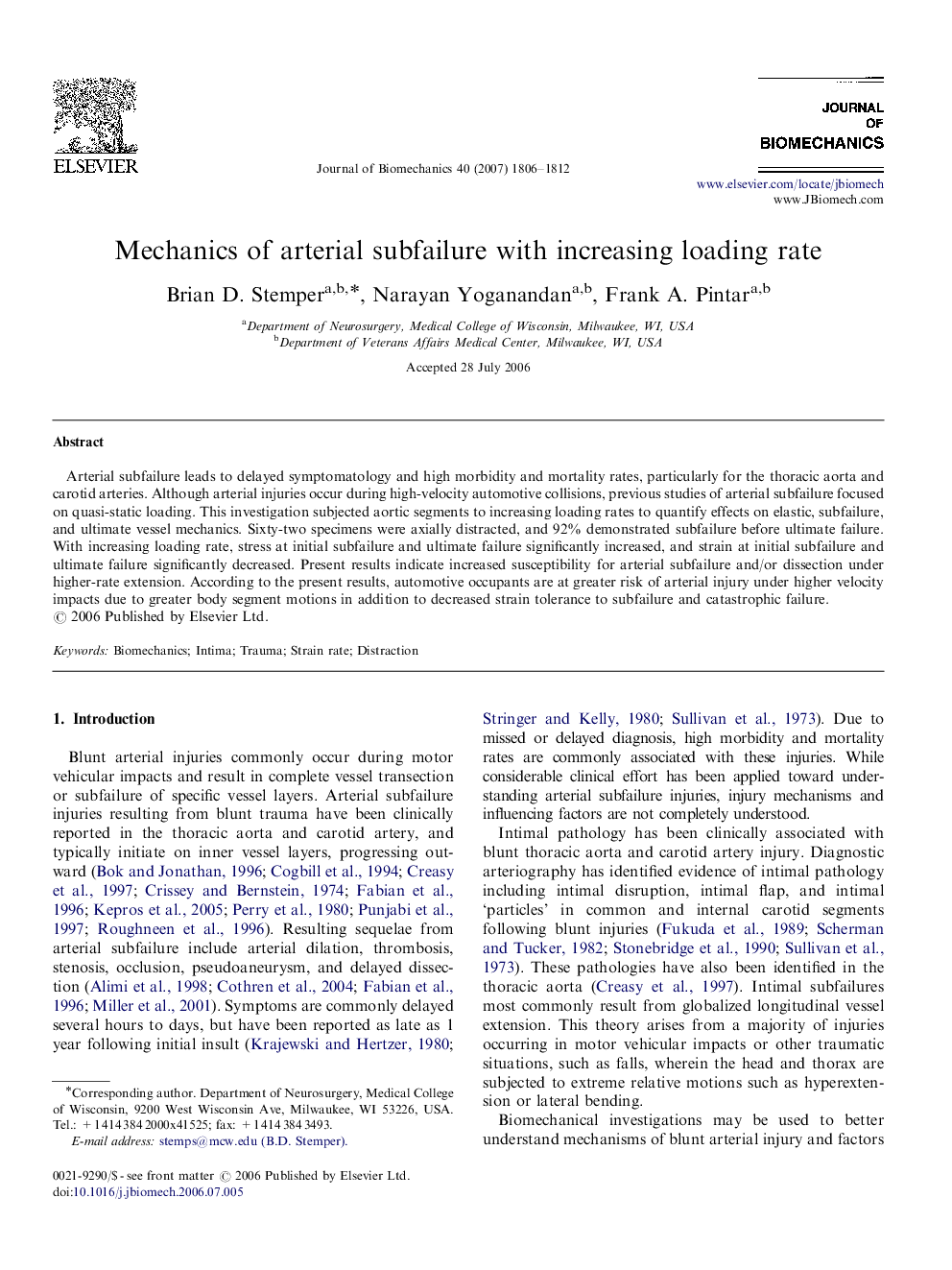| Article ID | Journal | Published Year | Pages | File Type |
|---|---|---|---|---|
| 874377 | Journal of Biomechanics | 2007 | 7 Pages |
Arterial subfailure leads to delayed symptomatology and high morbidity and mortality rates, particularly for the thoracic aorta and carotid arteries. Although arterial injuries occur during high-velocity automotive collisions, previous studies of arterial subfailure focused on quasi-static loading. This investigation subjected aortic segments to increasing loading rates to quantify effects on elastic, subfailure, and ultimate vessel mechanics. Sixty-two specimens were axially distracted, and 92% demonstrated subfailure before ultimate failure. With increasing loading rate, stress at initial subfailure and ultimate failure significantly increased, and strain at initial subfailure and ultimate failure significantly decreased. Present results indicate increased susceptibility for arterial subfailure and/or dissection under higher-rate extension. According to the present results, automotive occupants are at greater risk of arterial injury under higher velocity impacts due to greater body segment motions in addition to decreased strain tolerance to subfailure and catastrophic failure.
